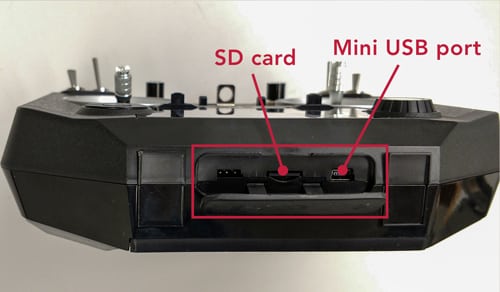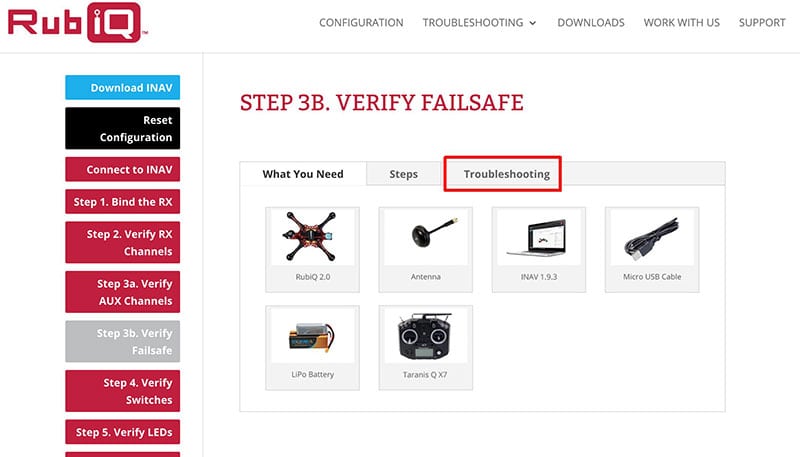File Transfer via Mini USB Cable
Note: this method requires the use of a mini USB cable.
1. Hold the horizontal trims inward and press the power button once to power on the Taranis.

If done correctly the “BootLoader” Screen should be displayed.

2. Open the rubber port cover on the bottom of the Taranis X7. Connect the Taranis to the Computer using a “Mini USB” cable.


3. Transfer Files from the downloaded folder to the Taranis’s USB drive. Ensure that the Computer sees the Taranis’s USB drive Directory. On a Windows device, the directory will appear as “USB drive” and as “NO NAME” on a Mac. You are transferring the files you just downloaded from the “QX7_RubiQ_Freerider_Riot250R_ELF” folder on your computer to the “USB Drive” or the “NO NAME” drive, depending on your system. DO NOT transfer the files to the TARANIS drive! The TARANIS drive contains the software native to the controller and is not large enough to hold the files you are transferring.

4. Copy the Contents of the “QX7_RubiQ_Freerider_Riot250R_EL” folder to the USB drive, replacing the contents of the USB Drive:
- Select all the folders in the QX7_RubiQ_Freerider_Riot250R_ELF folder. Drag them into the file window showing the folders in the USB Directory (the names of the two sets of files will be similar or identical). When given the option, choose to Replace the files in the new destination.

- Safely Eject the USB Drive to prevent corruption of data.
- Safely eject the TARANIS drive.
- Power down the Taranis.
Failsafe Warning

5. You should always reset the failsafe before flying. Failure to reset the failsafe before flying may result in an out-of-control drone in the event you lose connection with your RubiQ mid-flight. To learn how to reset the failsafe, refer to the troubleshooting tab in Step 3b in the RubiQ Configuration Guide.

Apply the Appropriate Model
6. Power up the Taranis.
7. Click on the MENU Button to enter the “Model Selection” Screen. At this point, the screen will look exactly as it did before.

8. Press the ENT Button (push the right selection wheel) and select the “Restore Model” option

9. Select the RubiQ T model from the model list (RubiQ T, RubiQ S, ELF, FreeRider, RIOT) and push ENT. RubiQ T should now appear as a model.
10. Scroll down to the next available number and repeat steps 8 and 9 for each of the remaining models.


